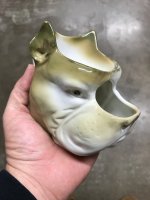- Thread starter
- #21
No not much literature at all. I think at the time (early 1900s) perhaps as much as 40% (I'm guessing) of the population was living on farms and making soap at home was still quite common. Sure if you lived in a big city you would have had access to stores selling soap. So basically using the hot ashes from the living room fireplace and pouring cold water over them to extract the lye. Then bring a big pot of animal fat (tallow) to a boil and add the lye mix and pour it into a mould and cool it. Cut into chunks and that's your shave soap/bath soap/cloth cleaning soap…I'm sure there was more to the process but something like that.This is a fascinating thread!! So there is no literature from that time period on how they were used? It’s so odd that such a common thing could be (kind of) shrouded in mystery. Undoubtedly one of the theories here is correct but it would be cool to know definitively.






